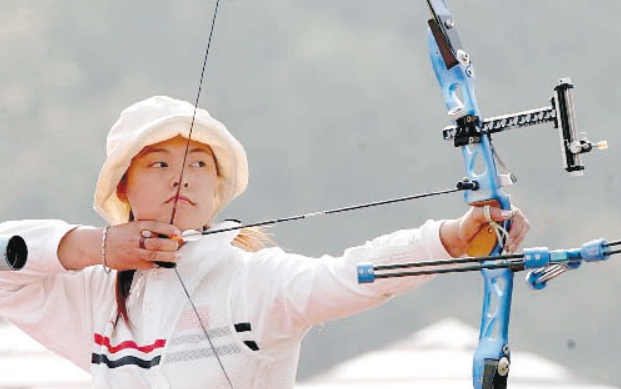Release time:2025-04-21 15:44:57Clicks:author:SPG ArcheryMain categories:Bows, Arrows, Archery Accessories

We often hear the word "efficiency" when we are shooting arrows, so what exactly is efficiency? Let's explain it to you below!
Basic concepts of bow and arrow efficiency
1. Energy conversion efficiency
"Efficiency" is a common term used by people to evaluate the performance of a bow, but many people cannot clearly explain what efficiency is. In fact, efficiency usually refers to the mechanical efficiency of the bow and arrow, that is, the ratio of the output work of the bow and arrow to the input work.
The bow and arrow can be regarded as a group of mechanisms. The output work of this group of mechanisms is the kinetic energy of the arrow, and the input work is the work done by the pulling force of the person. In the case of slowly opening the bow, the work done by this pulling force is the energy storage of the bow. Since the energy of the arrow is kinetic energy and the energy storage of the bow is elastic potential energy, energy conversion occurs during the process of archery, so this efficiency is actually the energy conversion efficiency of the bow and arrow. It is clear that this efficiency must involve the arrow, and it is meaningless to just talk about the "efficiency of the bow".
Then the energy conversion efficiency of the bow and arrow can be defined as follows: the energy conversion efficiency of the bow and arrow is the ratio of the kinetic energy of the arrow when it leaves the string to the elastic potential energy stored when the bow is fully drawn, or the percentage of the energy of the arrow when the arrow is separated from the bowstring to the original energy stored in the bow. Among them, the kinetic energy of the arrow is easy to calculate, and it can be obtained according to Ek=1/2*mv^2. For the energy storage of the bow, since the slow bow drawing process of a person can be regarded as a statics problem, the energy storage of the bow is the work done by the pulling force during the bow drawing process. Many people know that the work done by the pulling force is equal to the pulling force multiplied by the distance, and in the process of bow drawing, it is the pulling force multiplied by the relative drawing distance (absolute drawing distance minus the size of the bow). The problem is that the pulling force of the bow is not a constant value. It gradually increases during the bow drawing process, and it does not increase linearly. If it is a spring, we all know that its elastic force increases linearly relative to the deformation variable, so the elastic potential energy of the spring can be calculated by calculating the area of the triangle. For irregular pulling force curves, we need to perform integral operations. (Picture from the Internet) 2. Energy storage efficiency Many people judge the "efficiency" of a bow based on its tension curve, which is unscientific because the curve can only reflect the energy storage of the bow, but not the performance of the bow during archery. At this time, "efficiency" actually refers to the amount of energy stored in the bow when the maximum tension is constant. Large energy storage means "high efficiency" and small energy storage means "low efficiency". However, the energy storage size of the bow and the maximum tension are different physical quantities, and the two should not be directly compared. Therefore, a new concept is introduced here, namely energy storage efficiency. Energy storage efficiency is the ratio of the actual energy storage of the bow to its ideal energy storage, where the ideal energy storage is the product of the maximum tension and the maximum draw distance. This concept is used to characterize the performance of the bow in storing energy when the maximum tension is constant. Using the tension curve, you can intuitively see its meaning. To facilitate the calculation of energy, the units in the figure have been converted into the basic units of the International System of Units of force and length, and the horizontal axis is the relative draw distance. It should be noted here that if the vertical axis unit is kilograms or pounds, then the area enclosed by the curve and the horizontal axis is not the energy value.
Anyone who has studied high school physics knows that if the tension of a bow remains unchanged during the process of pulling it, then the energy it ultimately stores is the rectangular area below the blue line; in actual situations, the energy stored in the bow is the irregular area below the red line. Then the energy storage efficiency is the percentage of the area below the red line to the area below the blue line. For general traditional bows, the energy storage efficiency is usually slightly greater than 50%. The larger this value is, the greater the energy storage of the bow under a certain maximum tension; if the value is less than 50%, it often means that the bow has been over-pulled, the tension curve rises rapidly, and the curve changes from convex to concave.
This value can explain what people call the "efficiency" of the tension curve in many cases, and can be used to show the degree of "convexity" of the tension curve.
One thing that needs to be made clear is that the energy conversion efficiency is for the bow and arrow system, and the energy storage efficiency is for a single bow.